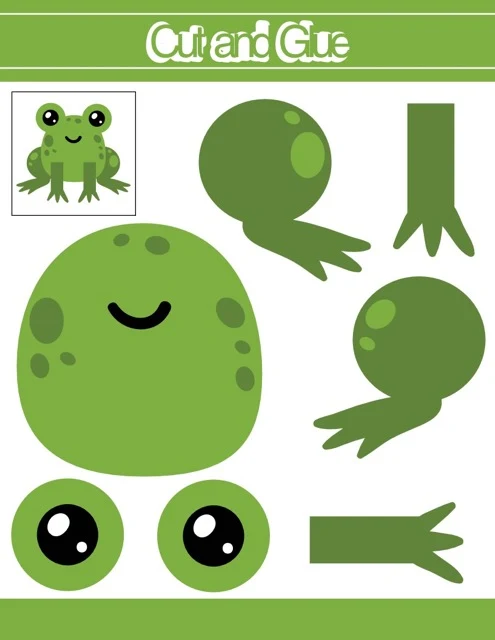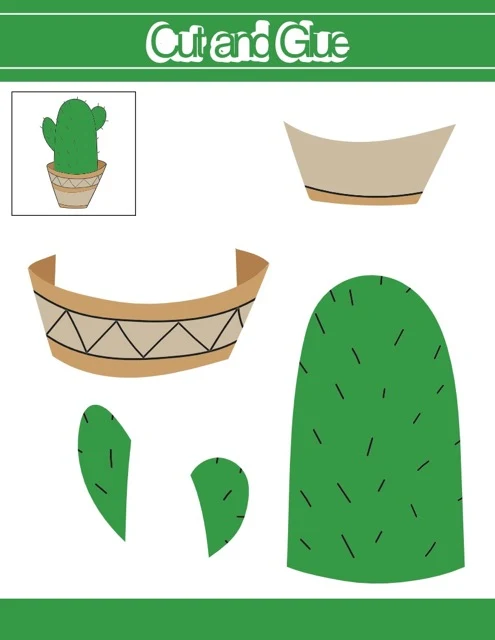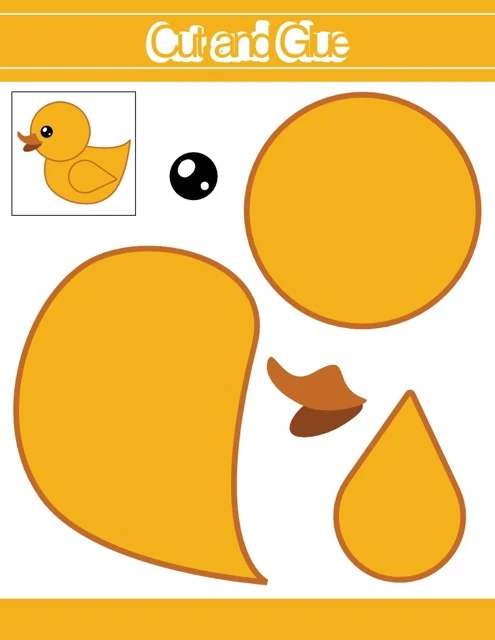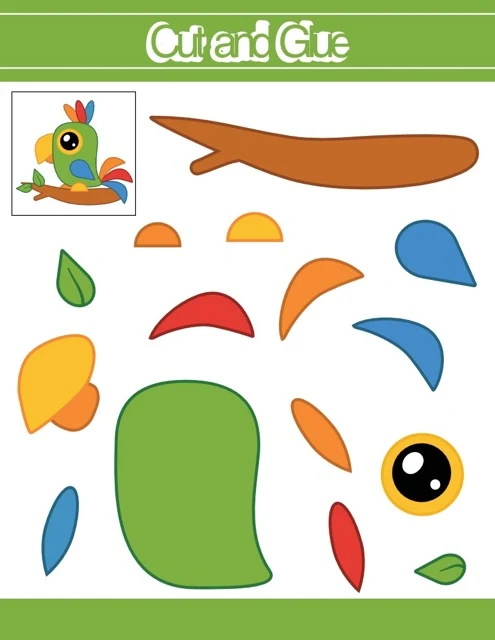Cut and Glue: Benefits for Child Development
Three sources explore the benefits of "Cut and Glue" activities for children. Developmental advantages emphasized include fine motor skill development, hand-eye coordination, and creativity. Educational uses range from learning about animals and shapes to fostering storytelling. The activity's adaptability and accessibility make it suitable for various ages and skill levels, using minimal materials. Further research into digital versions and therapeutic applications is suggested.
Cut and Glue Animals: A Developmental and Educational Guide
Cut and Glue Animals: A Briefing Document
This briefing document reviews the main themes and key takeaways from three sources: "Cut and Glue Animals" FAQ, "Cut and Glue Animals: A Study Guide," and "Testing Theme: Cut and Glue.pdf."
Main Themes:
●
Developmental Benefits: Cut and Glue activities are highlighted for their numerous developmental benefits for children of various ages.
●
Educational Applications: The sources emphasize the versatility of Cut and Glue in educational settings, teaching about animals, shapes, colors, and facilitating storytelling and imaginative play.
●
Accessibility and Adaptability: The activity is presented as accessible and adaptable, requiring minimal materials and adjustable to different skill levels.
Key Ideas & Facts:
Developmental Skills:
●
"Cut and Glue" activities develop fine motor skills, hand-eye coordination, shape recognition, creativity, and problem-solving skills. They also help children follow instructions and improve their focus. ("Cut and Glue Animals: A Study Guide")
●
Hand-eye coordination is refined through precise cutting and placement of pieces. ("Cut and Glue Animals: A Study Guide")
●
The act of assembling the final image and potentially adding personal touches encourages creativity. ("Cut and Glue Animals: A Study Guide")
Educational Applications:
●
Cut and Glue can be used to teach about animals and their body parts, colors, and shapes.
●
The activity can be incorporated into storytelling and imaginative play. For example, "students could cut and glue a lion and then write a story about their lion character." ("Cut and Glue Animals: A Study Guide")
Adaptability & Accessibility:
●
The level of difficulty can be adjusted based on age and ability. Younger children might need help with cutting and simpler designs, while older children can manage more complex shapes and patterns. ("Cut and Glue Animals: A Study Guide")
●
The basic materials needed are simple: printed sheets, scissors, and glue. ("Cut and Glue Animals: A Study Guide")
Specific Information from "Testing Theme: Cut and Glue.pdf":
●
This document provides templates for creating the following animals: hedgehog, pig, mouse, monkey, mushroom, and raccoon.
Additional Insights:
●
The Study Guide suggests comparing traditional Cut and Glue activities with digital versions that utilize technology. This comparison could reveal insights into the advantages and limitations of both approaches.
●
Exploration of the therapeutic benefits of Cut and Glue activities for individuals with diverse learning styles or abilities is recommended. This research could uncover additional applications of this seemingly simple activity.
Conclusion:
Cut and Glue activities offer a wealth of developmental, educational, and therapeutic benefits. Their accessibility, adaptability, and engaging nature make them a valuable tool for educators, therapists, and parents alike. Further exploration of their applications and benefits in diverse contexts is encouraged.
Cut and Glue Animals
Cut and Glue Animal FAQ
1. What is "Cut and Glue"?
"Cut and Glue" is a fun and engaging activity where you cut out pre-designed shapes and glue them together to create different images, particularly animals in this case.
2. What kind of animals can I create with this activity?
You can create a variety of animals like a lion, pig, hedgehog, mouse, monkey, mushroom, and raccoon. Each animal comes with its own set of cut-out pieces to assemble.
3. What materials do I need for "Cut and Glue"?
You'll need the printed "Cut and Glue" sheets, a pair of scissors for cutting out the shapes, and glue to stick the pieces together.
4. What skills does "Cut and Glue" help develop?
This activity helps develop fine motor skills, hand-eye coordination, shape recognition, creativity, and problem-solving skills. It also helps children follow instructions and improve their focus.
5. Is "Cut and Glue" suitable for all ages?
"Cut and Glue" can be adapted for different age groups. Younger children may need assistance with cutting, while older children can handle more complex designs.
6. Can I use "Cut and Glue" for educational purposes?
Absolutely! "Cut and Glue" can be used to teach about different animals, their body parts, colors, and shapes. It can also be incorporated into storytelling and imaginative play.
7. How can I make "Cut and Glue" more challenging?
You can make the activity more challenging by using smaller pieces, adding more details to the designs, or encouraging children to create their own animals using basic shapes.
8. Where can I find more "Cut and Glue" activities?
You can find numerous "Cut and Glue" activities online or in activity books. You can also create your own templates based on different themes and interests.
Cut and Glue Animals: A Study Guide
Cut and Glue Animals Study Guide
Short Answer Questions (2-3 sentences each):
1.
List five skills that "Cut and Glue" activities can help develop.
2.
Besides animals, what other themes or designs could be used for "Cut and Glue" activities?
3.
Briefly explain how "Cut and Glue" activities can be adapted for different age groups.
4.
Describe three ways to make "Cut and Glue" activities more challenging.
5.
How can "Cut and Glue" activities be incorporated into educational settings? Provide two specific examples.
6.
Based on the provided "Testing Theme" document, list the animals that can be created using the included templates.
7.
What basic materials are needed to complete "Cut and Glue" activities?
8.
Explain why hand-eye coordination is an important skill developed through "Cut and Glue."
9.
How does the "Cut and Glue" activity promote creativity in individuals?
10.
Can you think of other activities that are similar to "Cut and Glue" in terms of the skills they develop? Name at least two.
Short Answer Key:
1.
"Cut and Glue" activities help develop fine motor skills, hand-eye coordination, shape recognition, creativity, and problem-solving skills. They also help children follow instructions and improve their focus.
2.
"Cut and Glue" activities can be adapted to various themes like vehicles, plants, food, letters, numbers, or even abstract designs. The possibilities are limitless!
3.
Younger children might need help with cutting and simpler designs, while older children can manage more complex shapes and patterns. The level of difficulty can be adjusted based on age and ability.
4.
"Cut and Glue" can be made more challenging by using smaller pieces, adding more details to the designs, or encouraging children to create their own animal designs using basic shapes.
5.
They can be used to teach about animals and their body parts, colors, and shapes. They can also be incorporated into storytelling and imaginative play. For example, students could cut and glue a lion and then write a story about their lion character. Or, they could learn about geometric shapes while creating abstract designs.
6.
The animals that can be created are a hedgehog, a pig, a mouse, a monkey, a mushroom, and a raccoon.
7.
The basic materials needed are printed "Cut and Glue" sheets, a pair of scissors for cutting out the shapes, and glue to stick the pieces together.
8.
Hand-eye coordination is important for tasks that require the hands to work in conjunction with visual input. "Cut and Glue" helps refine this skill by requiring precise cutting and placement of pieces.
9.
"Cut and Glue" allows individuals to experiment with shapes, colors, and arrangements, fostering creativity in assembling the final image and potentially adding personal touches.
10.
Activities similar to "Cut and Glue" include puzzles, building blocks, origami, and drawing/coloring, all of which promote similar skill development.
Essay Questions:
1.
Discuss the importance of play-based learning in child development, using "Cut and Glue" activities as an example.
2.
Analyze how "Cut and Glue" activities can be used to promote social-emotional learning in children.
3.
Compare and contrast the benefits of traditional "Cut and Glue" activities with digital versions that utilize technology.
4.
Design a detailed lesson plan for an elementary school class that incorporates "Cut and Glue" activities to teach a specific concept.
5.
Explore the potential therapeutic benefits of "Cut and Glue" activities for individuals with different learning styles or abilities.
Glossary of Key Terms:
●
Fine motor skills: The coordination of small muscles in the hands and fingers, often involving precise movements.
●
Hand-eye coordination: The ability to synchronize hand movements with visual information.
●
Shape recognition: The ability to identify and differentiate between various geometric shapes.
●
Problem-solving skills: The ability to analyze a situation, identify solutions, and implement a plan to overcome a challenge.
●
Creativity: The ability to generate new and original ideas or solutions.
●
Templates: Pre-designed patterns or outlines that serve as guides for cutting and assembling shapes.
●
Educational purposes: The utilization of activities or materials to facilitate learning and skill development.
●
Imaginative play: A type of play where children engage in make-believe scenarios and explore their creativity.
●
Therapeutic benefits: The positive effects of activities on mental, emotional, or physical well-being.
●
Learning styles: Different approaches and preferences individuals have for acquiring and processing information.


























